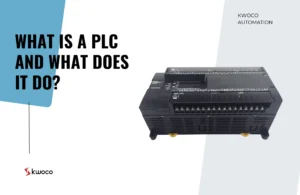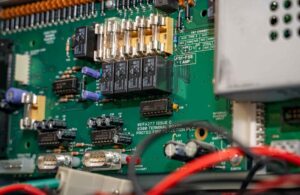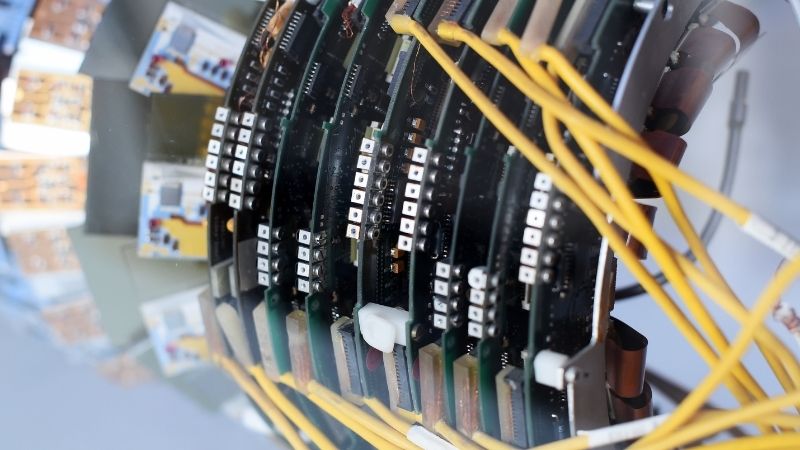Limit Switches Explained: Types, Uses, and Working Principles
This article delves into the types of limit switches, how they work, and why they remain indispensable despite the rise of proximity Sensoren.
Inhaltsverzeichnis
What Are Limit Switches?
Limit switches are electromechanical devices that respond to physical contact. When an object applies force to the switch’s actuator, it triggers an electrical connection to either make or break.
This functionality allows limit switches to detect an object’s position, movement, or presence, enabling precise control within a system. These switches got their name because they were initially used to define the travel limit of an object.
Types of Limit Switches
There are four primary types of limit switches, each suited to different applications based on the actuator’s shape and function. Let’s explore these types:
- Whisker: The actuator resembles a whisker or wire and is suitable for light-contact applications.
- Roller: Equipped with a rolling mechanism, this type is ideal for applications where objects need to roll past.
- Lever: A classic type with a lever actuator, commonly used for general-purpose applications.
- Plunger: This type features a direct push mechanism and is commonly used in heavy-duty applications.
Depending on the application, some limit switches may combine two types, such as a roller-lever switch, to meet specific needs.
Applications of Limit Switches
Limit switches are everywhere, from everyday household items to industrial machinery. A few common examples include:
- Refrigerator Doors: When you open the fridge, a limit switch activates the interior light, turning it off when the door closes.
- Garage Doors: In overhead garage doors, limit switches ensure the door stops moving once it reaches the fully opened or closed position.
- Industrial Machinery: In factories, limit switches detect the presence of containers on assembly lines or the position of moving parts, improving efficiency and safety.
How Do Limit Switches Work?
A limit switch consists of an actuator mechanically connected to an electrical switch. When an object makes contact with the actuator, it causes the switch to open or close the circuit, depending on the configuration. This mechanism enables reliable and consistent control in diverse applications, from simple lighting controls to complex automated systems.
Configurations of Limit Switches
Limit switches come in several configurations, mainly:
- Normalerweise offen (NO): The circuit is open until the switch is activated.
- Normalerweise geschlossen (NC): The circuit is closed until the switch is activated.
- SPDT (Single Pole Double Throw): A combination of NO and NC configurations, allowing for more complex control.
These configurations provide flexibility, allowing limit switches to be customized for various electrical and mechanical systems.
Limit Switch Symbols
In electrical schematics, different symbols represent limit switches, varying by standard. Two main standards for limit switch symbols are:
- IEC (International Electrotechnical Commission): A widely used international standard.
- NEMA (National Electrical Manufacturers Association): A U.S. standard commonly seen in North American applications.
Understanding these symbols is essential for interpreting electrical schematics, especially in global applications where equipment may follow different standards.
Proximity Sensors vs. Limit Switches
Although proximity sensors have become more common in industrial settings, limit switches are still widely used, especially in environments that demand durability. Unlike limit switches, proximity sensors have no moving parts, reducing wear and tear.
However, limit switches excel in ruggedness and can handle higher current loads, making them better suited for high-stress applications. In scenarios where reliability in harsh environments is essential, limit switches remain the preferred choice.
Versorgen Sie Ihre Projekte mit brandneuen, originalen SPS von Omron, Mitsubishi und Schneider – auf Lager, sofort verfügbar!
Abschluss
Limit switches are an indispensable component across various industries, providing reliable and precise control in systems ranging from household appliances to industrial machinery.
While proximity sensors are on the rise, limit switches continue to hold their ground due to their robustness and adaptability. By understanding the types, configurations, and applications of limit switches, you can make more informed decisions in selecting the best option for your application.
Suchen Sie nach neuen, originalen SPS für Ihre Projekte? Bei Kwoco führen wir die neuesten SPS von Top-Marken wie Omron, Mitsubishi, Und Schneider. Kaufen Sie vertrauensvoll ein – schneller Versand, garantierte Qualität! Jetzt kaufen
Kontaktieren Sie uns
Geben Sie in dieses Formular einfach Ihren Namen, Ihre E-Mail-Adresse und eine kurze Beschreibung Ihrer Anfrage ein. Wir werden Sie innerhalb von 24 Stunden kontaktieren.
Diese Themen könnten Sie auch interessieren

Limit Switches Explained: Types, Uses, and Working Principles
Limit switches are a critical component in numerous devices and machines, playing a key role in detecting the presence or absence of an object. Whether it’s a refrigerator door or an industrial machine, limit switches are behind-the-scenes heroes, performing functions that ensure smooth operation and safety.

Was ist eine SPS und was macht sie?
What is a PLC and What Does It Do? In today’s fast-paced industrial world, companies need smart, reliable, and efficient

Understanding Sinking vs. Sourcing in PLC Systems
In programmable logic controllers (PLCs), the terms “sinking” and “sourcing” play a critical role in defining the flow of current in digital input and output modules. While the concept may initially seem technical, it is rooted in basic electrical principles and is key to designing efficient and functional PLC systems.






